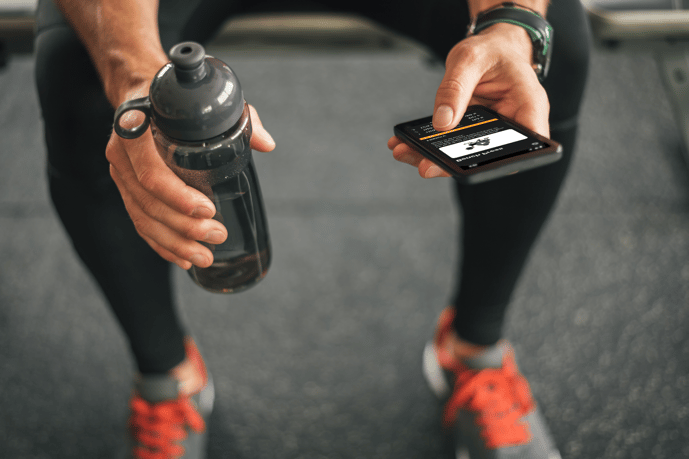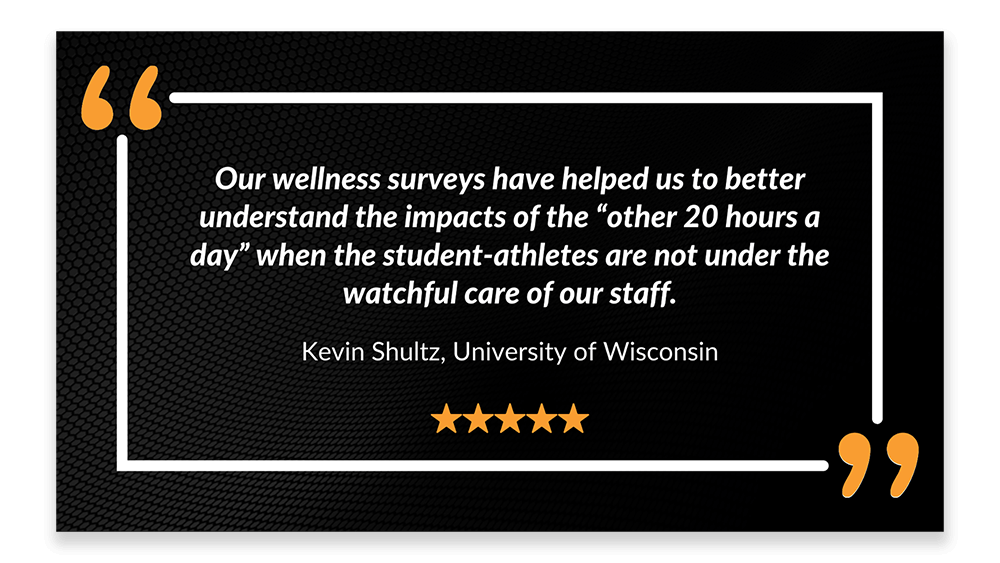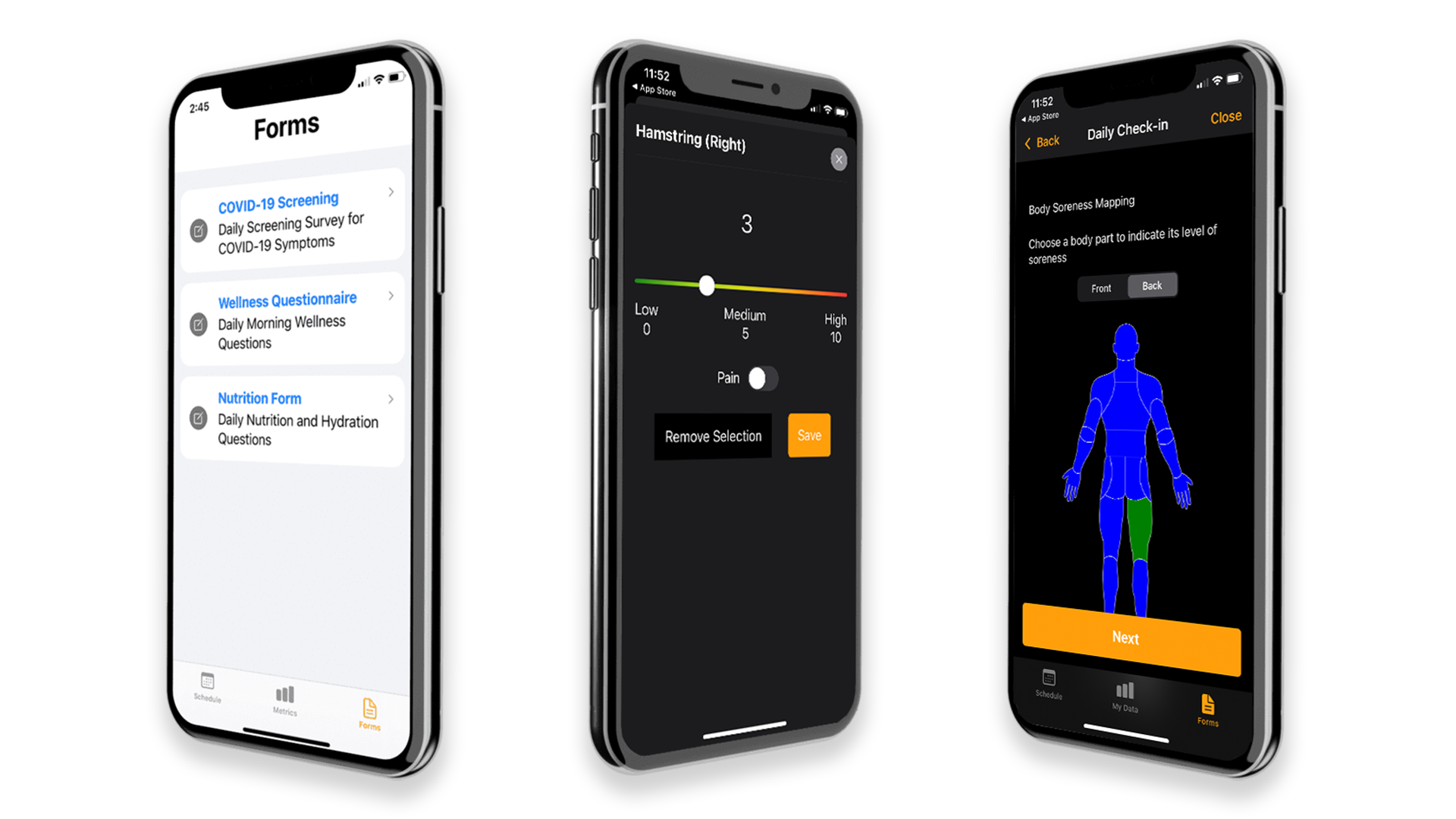
Wellness questionnaires have become a key component to athlete monitoring strategies in recent years. In this blog, we dive into why you should consider using wellness surveys, tips for athlete buy-in, and what to do with the insights these questionnaires reveal.
Why the wellness questionnaires?
Collecting subjective wellness data is a simple yet powerful way to monitor how your athletes are feeling, no matter the level of sport you may find yourself in. Whether you’re at the college level, in high school sports, or running your own performance operation – adding wellness data can help you refine your training strategy and understand your athlete.
This simple yet effective facet of athlete monitoring can capture the human variables that a linear training program or objective box score can’t.
The use of wellness surveys or questionnaires has grown in popularity, shown in the UEFA Elite Club Injury Study (McCall et al., 2016). FC Barcelona is also on record stating their use of the Hooper Scale (Hooper & Mackinnon, 1995) for their questionnaires, which track athletes’ sleep, stress, and perceived muscle damage. And there is also the Coutts Mclean Survey, which is used by many Kinduct users.
And doing so isn’t all that hard.
Setting up the Questionnaire
Administering a mobile-friendly survey provides staff with up-to-date data for decision making.
The questionnaire you use can track any number of metrics or KPIs. For example: mood, sleep, stress, soreness, nutrition, and even activities they may have completed outside of team workouts or practices.
-1.png?width=1920&name=wellness_survey_builder%20(1)-1.png)
The key is to select the metrics with purpose and to stick to them, so that the reporting and actions based on this data is consistent over time.
You’ll also need to choose how often athletes receive their wellness questionnaire? Is it a daily thing when they wake up? Just a weekly check in on how they’re holding up?
This is important when it comes to sustained compliance. As coaches, be open and honest with the why. Explain that this survey has their best interest at its core, and it won’t be used against them, but rather for them. The last thing an athlete wants to do is to fill in a piece of information that doesn't get acted on.
With Kinduct, our surveys are linked to summary reports which can be shown to both athletes and other coaches to help instil buy-in.
Sustaining Compliance
For you to truly the garner the benefits of wellness data, you need your athletes’ buy-in.
Your athletes need to trust and understand why they’re filling out the survey, but it’s also important to not inundate them with these questionnaires.

When building forms with Kinduct, you have the option to use what’s called conditional logic. This means that surveys or questionnaires now adapt to an athlete’s answers as they navigate the form; in other words, an athlete’s answer dictates which question they will be prompted with next.
For example, if the survey prompts athletes to “rate your soreness” they may not actually be sore. If that’s the case, why would the next screen have a body map asking them to locate the soreness? Conditional logic tells the form to continue to the next applicable answer, such as “how did you sleep last night?” and only shows the body map to those who are indeed experiencing soreness.
At the end of the day, the athlete gets asked less questions, experiences less decision fatigue, and you as the coach get the responses you are looking for.
What You Can do Next
Subjective wellness data doesn’t paint the whole picture of an athlete. But during a long season, having these daily insights can be applied in both in the weight room and on field of play. But how exactly can it be turned into an advantage?

During his time with the Ontario Hockey League’s Windsor Spitfires, Mark Packwood had this to say about his use of wellness questionnaires:
“Having these insights allows me to tweak the workload in the gym and ensures that I can communicate with the player and coach about something that may be going on, even if it was a sleeping issue or motivational issue, etc.”
This is an example of the immediate value of these surveys, there is also the long term affects.
In today’s world, athlete’s mental health is no longer an issue that’s brushed aside but rather at the forefront. Having this type of subjective data is a chance to intervene and have conversations about bigger issues the athlete might be experiencing.